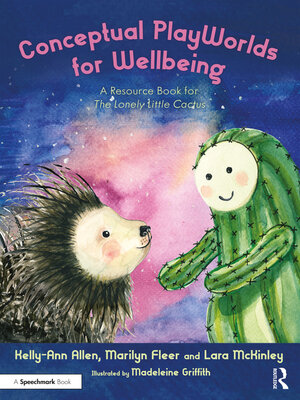Conceptual PlayWorlds for Wellbeing
ebook ∣ A Resource Book for the Lonely Little Cactus · Building Belonging and Wellbeing
By Kelly-Ann Allen

Sign up to save your library
With an OverDrive account, you can save your favorite libraries for at-a-glance information about availability. Find out more about OverDrive accounts.
Find this title in Libby, the library reading app by OverDrive.



Search for a digital library with this title
Title found at these libraries:
| Library Name | Distance |
|---|---|
| Loading... |
For effective use, this book should be purchased alongside the story book, The Lonely Little Cactus: A Story About Friendship, Coping, and Belonging. Both books can be purchased together as a set, Building Conceptual PlayWorlds for Wellbeing: The Lonely Little Cactus Story Book and Accompanying Resource Book.
This vital resource uses the evidence-driven Conceptual PlayWorlds model of intentional teaching developed by Professor Marilyn Fleer to provide supporting classroom or home-based activities to help children aged between four and eight solve challenges and learn wellbeing concepts through play.
Intended for use with the accompanying picture story book, The Lonely Little Cactus, a tale about a cactus that feels lonely living in the desert, this guide offers imagery-rich scenarios, including 20 unique activities, so children have an opportunity to experientially grasp wellbeing concepts that can be otherwise difficult to explain. This resource guides educators and teachers through a range of wellbeing activities, including:
Offering a unique opportunity for children to learn about psychological strategies while being engaged in a beautiful narrative and visually captivating illustrations, this is the ideal resource for educators or teachers, support staff, practitioners, and families looking to help children understand and manage their feelings. While the context is centre-based, the activities can be done almost anywhere, such as in family homes, the Botanical Gardens, when on holidays, or when visiting a park.







